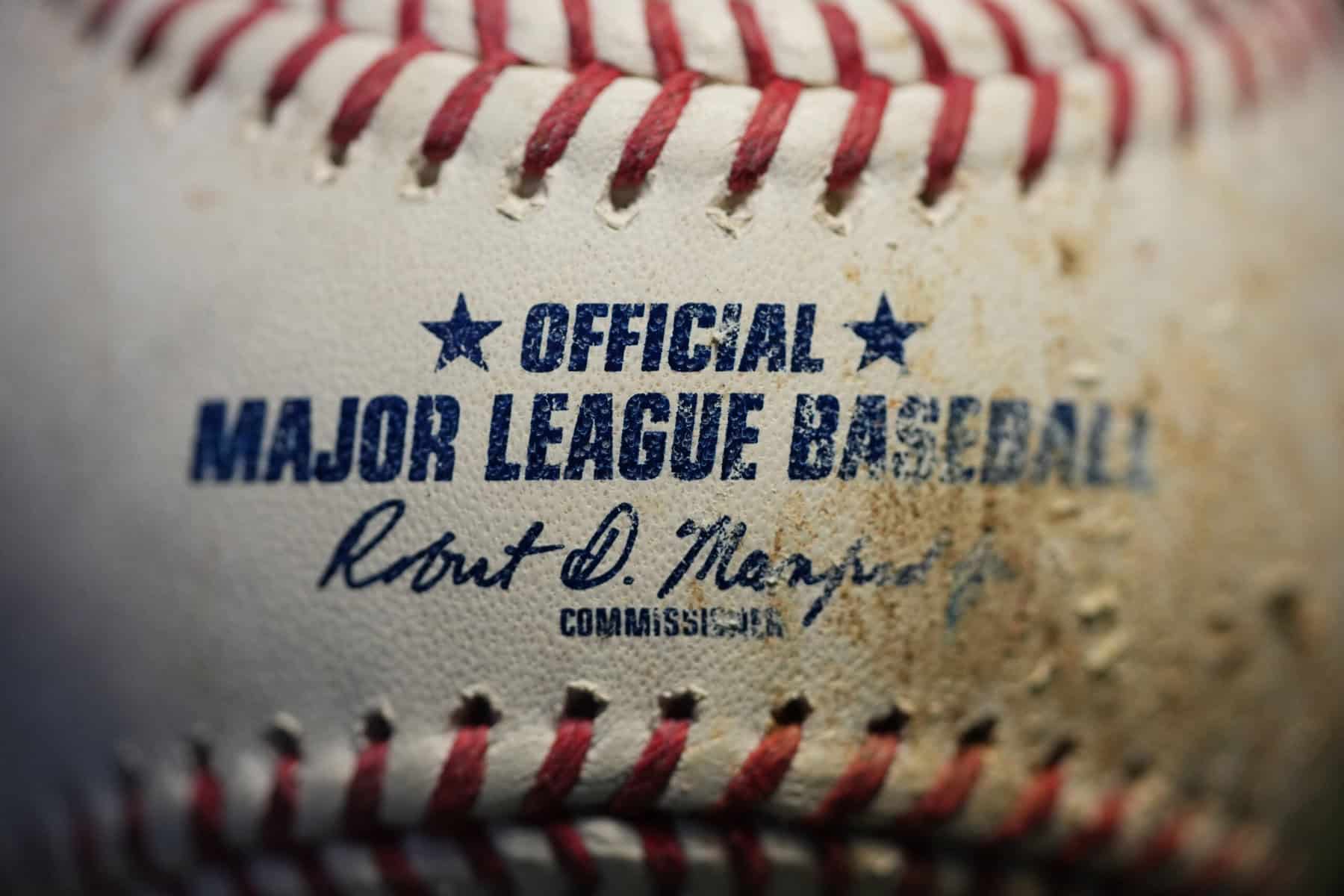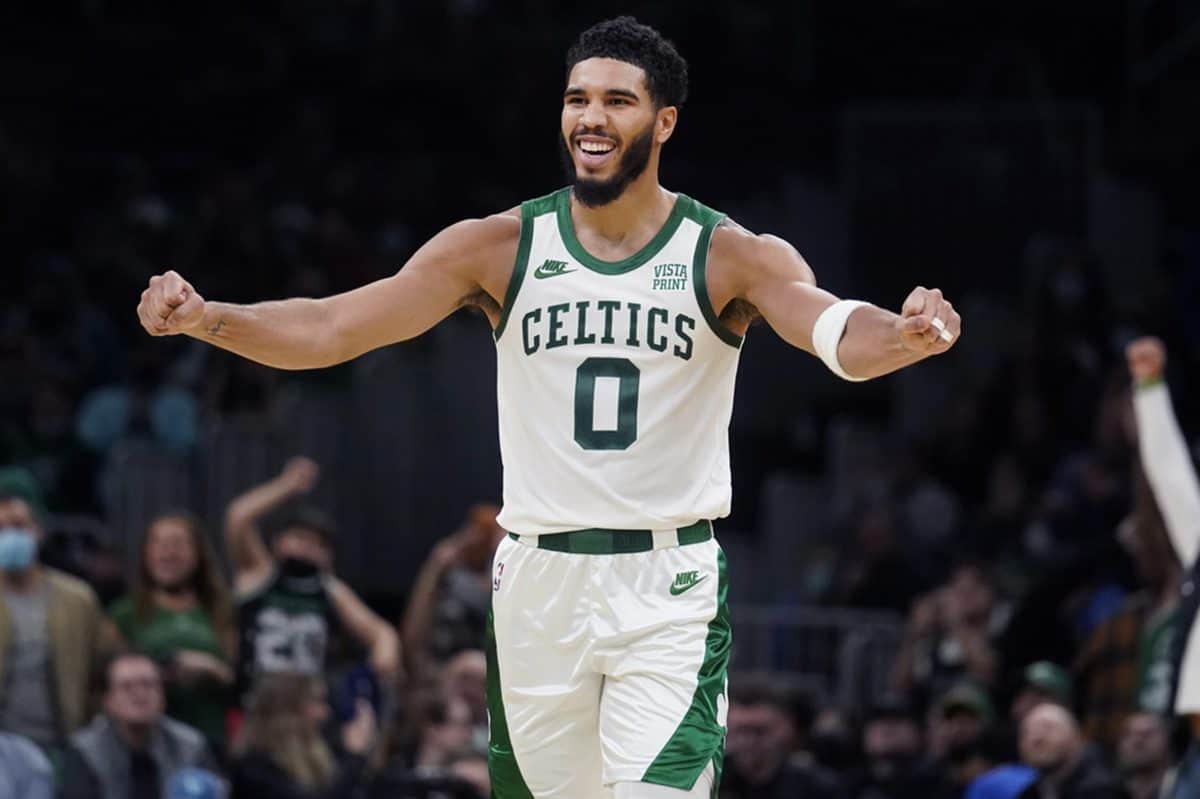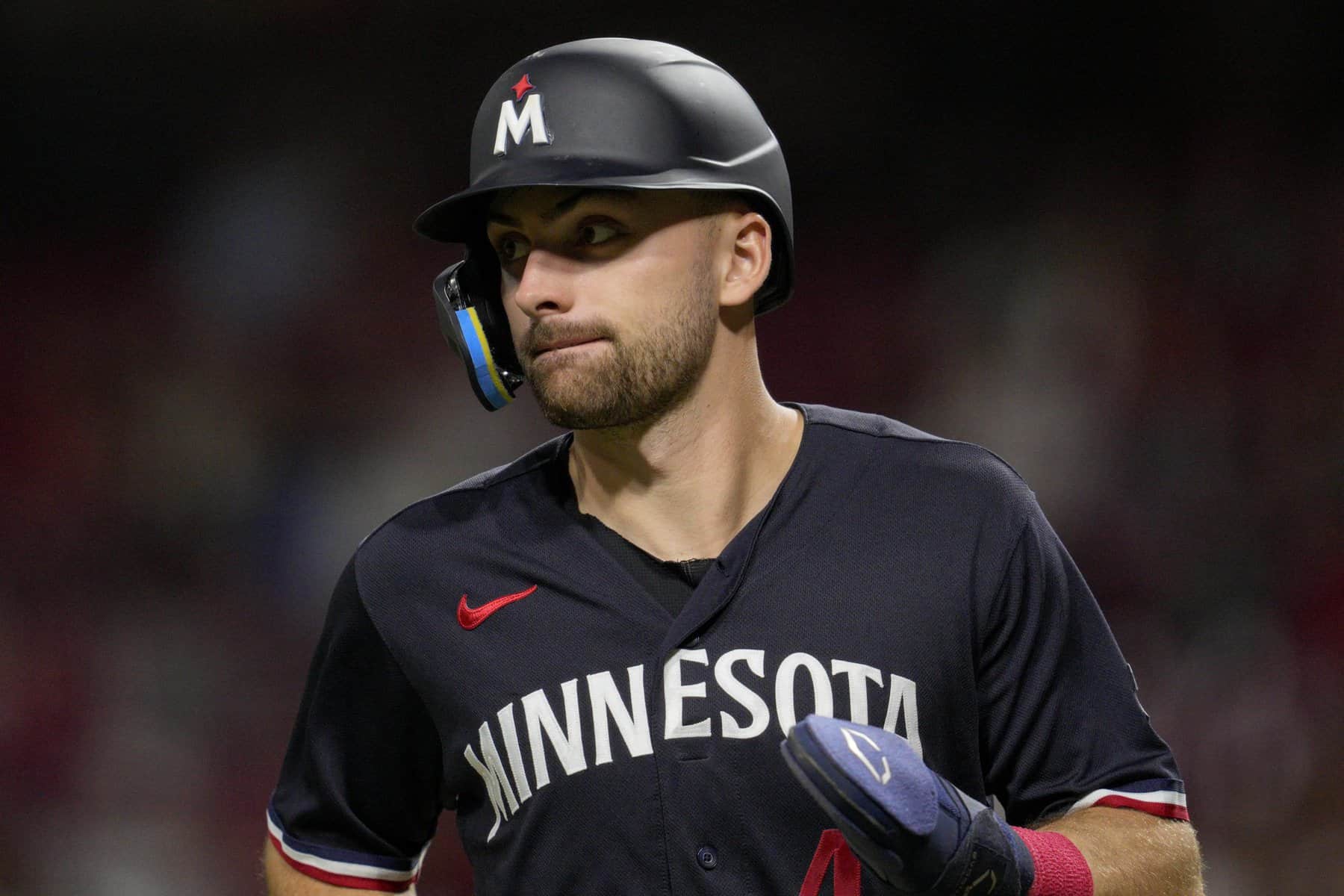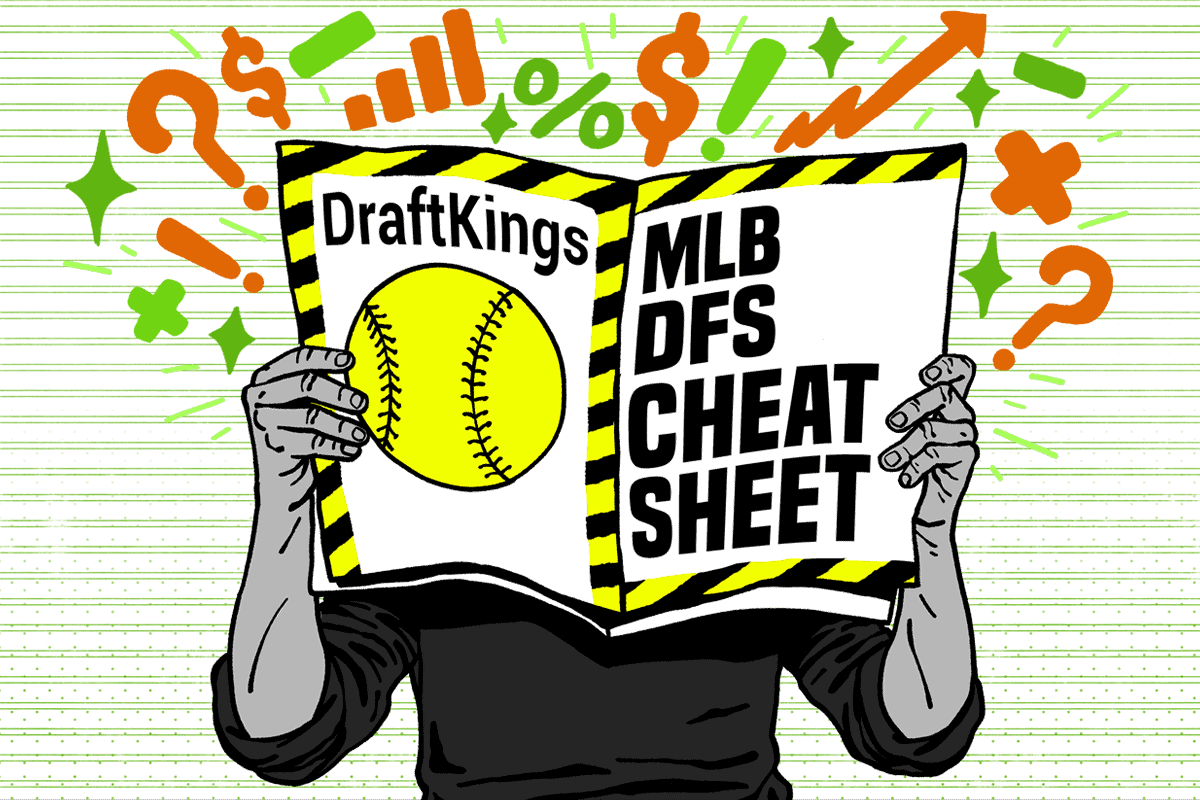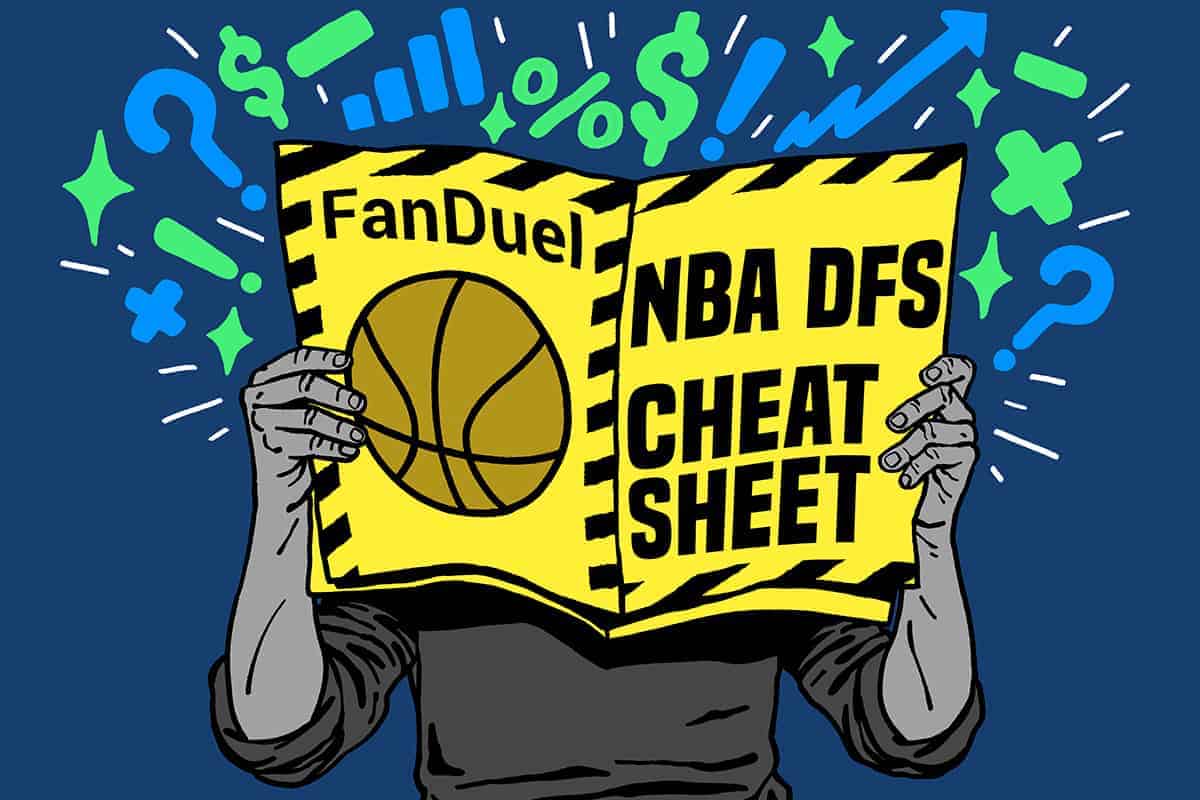(46.5) Chicago Bears (27.25) @ Jacksonville Jaguars (19.25)
All Graphs Reflect Last Five Weeks of Data, Click Graphs to Enlarge
Team Passing and Pace
First, let’s take a look at the possibility of this game turning into a shootout, as teams that play faster and pass more than average tend to score more fantasy points. When both teams play aggressively, it often creates a game environment perfect for fantasy scoring. Games have a higher probability of going over their Vegas total as well. Ideally, we’re seeking matchups where both teams are in the upper-right quadrant of the chart below (see the chart’s caption for more details).

Contrary to popular belief, the Jaguars have been running one of the more uptempo, pass-oriented offenses in the league over the last five weeks, while in Chicago, despite a return to winning ways, and multiple 30-plus point outings in a row, the Bears remain (over)committed to the running game and to clock-control, significantly lowering the probability of this game “shooting out.”
Recent Quarterback Performance
Next, let’s examine the starting quarterbacks’ recent play. Sustained drives in the NFL rely on efficiency at the quarterback position, so I’ve identified my three favorite performance indicators for assessing quarterback performance. The three bar charts below (see the graph’s caption for more detail) represent a quarterback’s per-drive efficiency (left bar-chart), per-play efficiency including rushes/scrambles (center) and per-pass efficiency (right). Higher rankings from both players indicate a higher likelihood of efficient play, thus a higher probability of fantasy points.
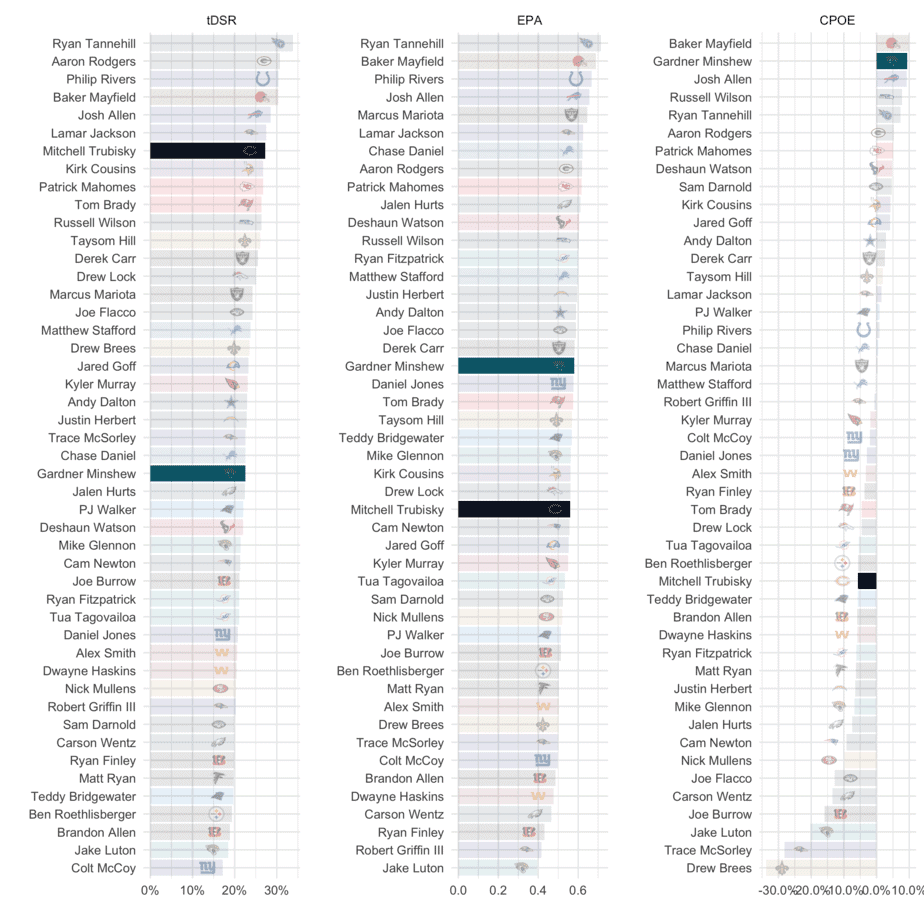
NFL DFS Player Pool Picker: Upside Analysis
Now, let’s examine the primary skill players from each offense. Unless participating in a large-field tournament, these are the players you should be focusing on in your daily fantasy football lineups. For each player, I’ve made it easy to compare their per-game fantasy (in column 3) to their DraftKings main slate salary ranking (in column 2). Column 4 ranks the player using my favorite position-specific volume metric: Expected fantasy points, which is curated by PFF. The Defense vs. Position column is an extremely helpful position-specific and player-group specific (for example, the metric delineates between primary wide receiver vs. secondary wide receivers) metric that helps determine if an offensive player is likely to be in a position to exceed their expected fantasy points. Higher numbers in the Defense vs. Position column indicate easier matchups for the offense, while numbers closer to one indicate a stout defense against that specific position-group.
The final column, Expected Projection, combines a player’s expected fantasy points with their weekly matchup into one helpful value metric. Apart from the Awesemo projections (which should still carry the most weight in determining player value), Expected Projection is one of my favorite metrics to help me narrow down my favorite plays of the week. The rankings are always specific to the slate, meaning if a player or team is ranked No. 1 at a specific metric, they may not necessarily be ranked No. 1 in the NFL, but they are for this specific slate.
Chicago Bears NFL DFS Core Offenses
| Team | Player | Positional Salary Rank | FPTs/Gm Rank | Expected FPTs/Gm Rank | Defense vs. Position | Expected Projection |
| CHI | Mitchell Trubisky, QB | #11 | #16 | #14 | #24 | 21 Fpts (QB5) |
| CHI | Allen Robinson II, WR | #4 | #5 | #8 | #24 | 19.5 Fpts (WR3) |
| CHI | David Montgomery, RB | #2 | #1 | #2 | #23 | 25.5 Fpts (RB1) |
| CHI | Darnell Mooney, WR | #39 | #36 | #49 | #30 | 10 Fpts (WR31) |
Jacksonville Jaguars NFL DFS Core Offenses
| Team | Player | Positional Salary Rank | FPTs/Gm Rank | Expected FPTs/Gm Rank | Defense vs. Position | Expected Projection |
| JAX | Gardner Minshew II, QB | #16 | #15 | #23 | #20 | 15 Fpts (QB16) |
| JAX | James Robinson, RB | #6 | #6 | #7 | #7 | 13 Fpts (RB7) |
| JAX | DJ Chark Jr., WR | #28 | #39 | #40 | #21 | 10.5 Fpts (WR29) |
| JAX | Laviska Shenault Jr., WR | #47 | #39 | #59 | #13 | 8 Fpts (WR48) |
| JAX | Keelan Cole, WR | #53 | #57 | #75 | #5 | 7 Fpts (WR55) |
| JAX | Tyler Eifert, TE | #19 | #13 | #20 | #26 | 9 Fpts (TE10) |
I didn’t expect the Bears’ skill position players to pop nearly as much as they do in the chart above. The core trio of Mitchell Trubisky, Allen Robinson and David Montgomery all have extremely positive matchups against a Jaguars offense that struggles in all phases, but despite having their salaries increased, all three seem like solid values, even at their top-tier salaries. James Robinson isn’t 100% healthy, but assuming he gets his normal workload, he should still be a fine volume-based play, as he seems to be every weekend. Tight end Tyler Eifert seems viable in tournaments, as the Bears have struggled against tight ends more than wide receivers over the last five weeks.
NFL DFS Backfield Values: Running Back Opportunities
Nailing the running back position in your fantasy football lineups is vitally important. There are many metrics that help fantasy gamers determine which running backs earn higher-value touches than their peers, but my favorite is Quality Opportunities per game. It only counts running back looks that come via the receiving game (as receptions are much more valuable on a per-play basis than rushes) or via goal line rushes (inside the opponent’s 10-yard line) since there isn’t anything more valuable than a touchdown.
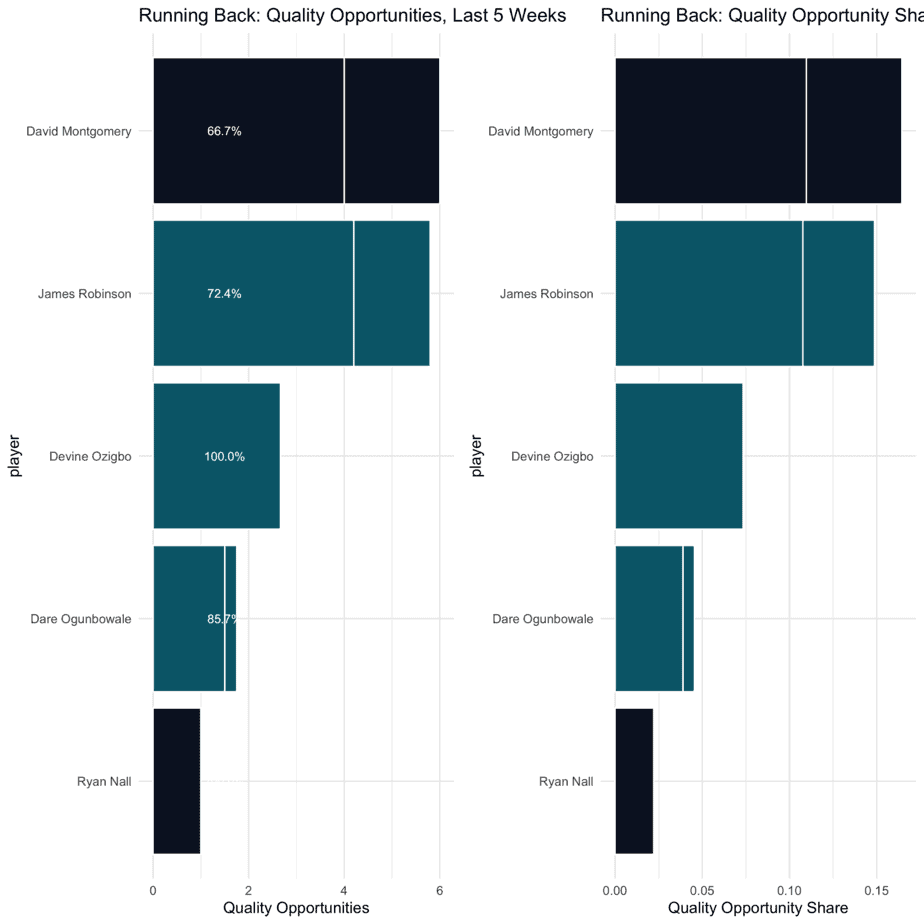
Play David Montgomery, play James Robinson, and ignore the rest. These two teams’ backfields are as cut-and-dry as it gets for fantasy gamers. Robinson, as the less-owned player this weekend, has considerably contrarian value as leverage off-of Montgomery.
NFL DFS Receiving Values: Skill Position Opportunity Ranges
The wide receiver and tight end positions are two of the higher-variance positions in all of daily fantasy football, so it’s important to consider both floor and ceiling when predicting a player’s usage. Players with unexpectedly high opportunity in the passing game often have the best chances to outperform their projections, so I created a chart that measures a player’s opportunity range of outcomes (see the caption of the graph for more details on how this is calculated.). The horizontal bars represent a player’s expected opportunity range, while the center dot represents their average opportunity.
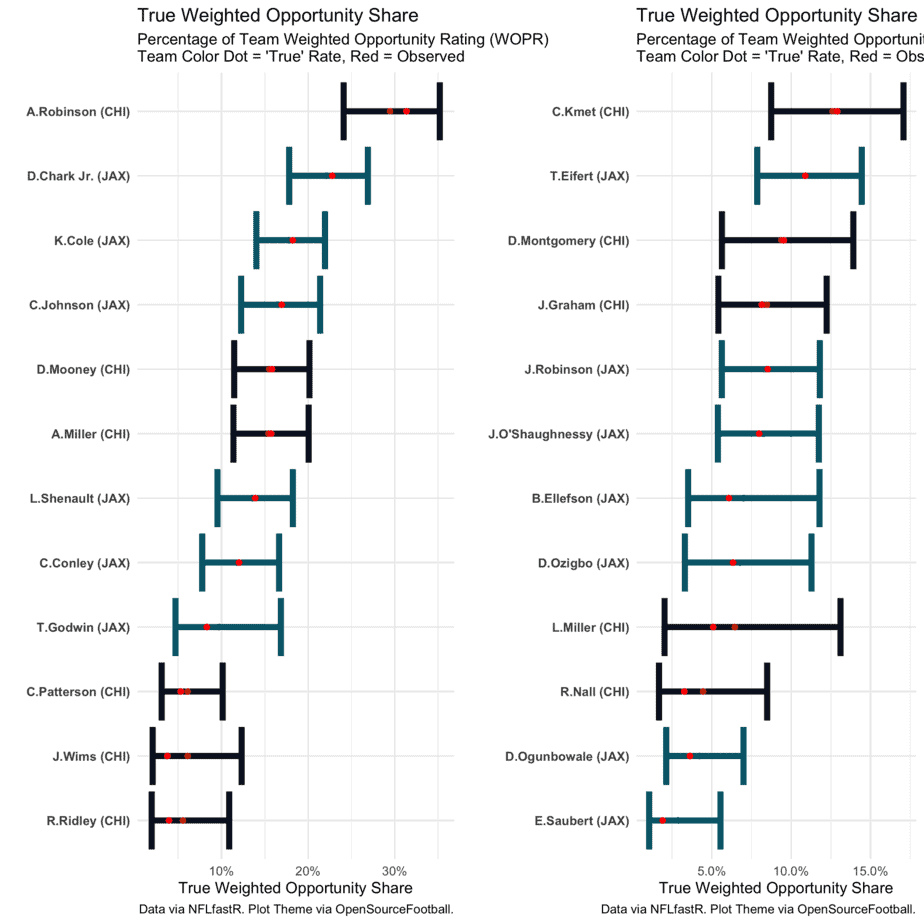
The chart on the right shows Cole Kmet‘s ascension to the top of the tight end depth chart in Chicago. With Darnell Mooney and Anthony Miller continuing to eat into each other’s snaps Kmet has been a near every-down player, and has arguably more opportunity upside than any other Bears’ player besides Allen Robinson. D.J. Chark continues to lead the Jaguars’ spread-em-0ut passing attack, but Tyler Eifert, Laviska Shenault, and Keelan Cole could easily wind up leading this passing-attack in opportunity, making it tough to zero-in on one particular Jaguars’ receiver this weekend.
NFL DFS Auxiliary Offensive Players for Large-Field Contests
In daily fantasy football, depending on the size and type of contest you’re playing, it’s often advantageous to expand your player pool to less-utilized offensive players. In this section, we examine every part-time player’s usage based on playing time, opportunity and (again) defensive matchup. For each player, I create an Opportunity Score, which scales a position-specific opportunity metric between zero (least valuable) and 100 (most valuable). Scores above 50 tend to indicate starter-level opportunity, while scores over 80 indicate star-level usage. Finally, I categorize the players as an NFL DFS value, a mass multi-entry option (MME-only) or a player to avoid altogether.
Chicago Bears NFL DFS Tournament Picks
| Team | Player | Snap Share | Opportunity Score | Defense vs. Position | Outlook: Value, MME-only, Look Elsewhere |
| CHI | Cole Kmet, TE | 71% | 67 | #6 | Value |
| CHI | Anthony Miller, WR | 59% | 61 | #17 | MME-only |
| CHI | Jimmy Graham, TE | 53% | 73 | #6 | MME-only |
| CHI | Cordarrelle Patterson, RB | 19% | 46 | #23 | MME-only |
| CHI | Javon Wims, WR | 32% | 11 | #17 | Look Elsewhere |
| CHI | Ryan Nall, RB | 6% | 14 | #23 | Look Elsewhere |
Jacksonville Jaguars NFL DFS Tournament Picks
| Team | Player | Snap Share | Opportunity Score | Defense vs. Position | Outlook: Value, MME-only, Look Elsewhere |
| JAX | James O’Shaughnessy, TE | 42% | 64 | #26 | MME-only |
| JAX | Collin Johnson, WR | 30% | 43 | #5 | Look Elsewhere |
| JAX | Chris Conley, WR | 47% | 47 | #5 | Look Elsewhere |
| JAX | Dare Ogunbowale, RB | 19% | 14 | #7 | Look Elsewhere |
Cole Kmet is absolutely viable in small- and large-field tournaments this weekend, despite the Jaguars playing particularly strong defense against opposing tight ends. Cordarrelle Patterson and Jimmy Graham make for interesting contrarian plays if creating a “Bears onslaught” roster, as well. Only James O’Shaughnessy pops as a viable punt-play tight end on the Jacksonville side. Chicago has a bottom-10 defense against opposing tight ends, but O’Shaughnessy plays on less than 45% of Jacksonville’s plays, making him extremely thin salary-saver play.
Final Thoughts
Give David Montgomery all the credit in the world for his monster second half of the season. On paper, this looks like another smash spot for Montgomery, who’s transformed himself from remedial plodder to one the best players at his position in 2020. Mitchell Trubisky and Allen Robinson should thrive as well. The Jaguars, outside of James Robinson, remain extremely tough to bet on in anything but large-field play.
Prediction: Bears 25, Jaguars 14
Looking for more NFL DFS picks and daily fantasy football matchups content? We have loads of articles, data and more on the Awesemo NFL home page. Just click HERE.
